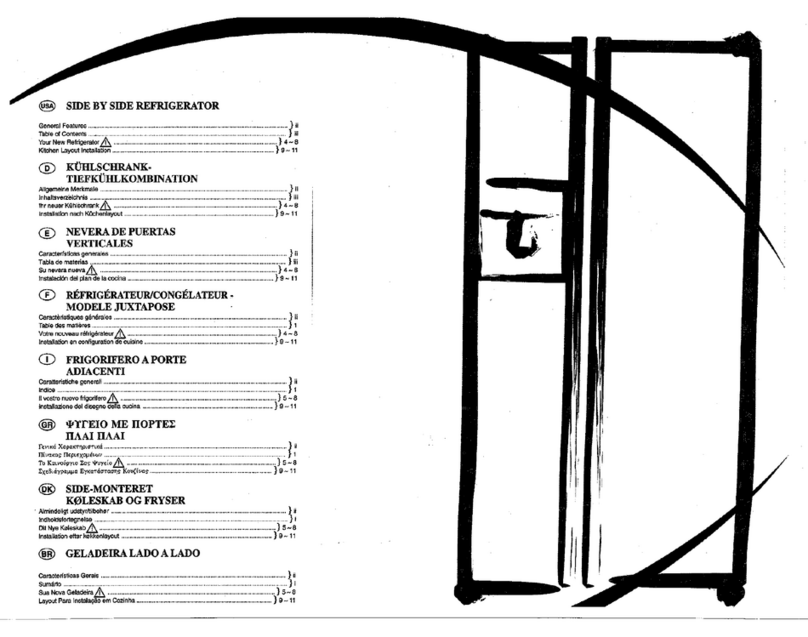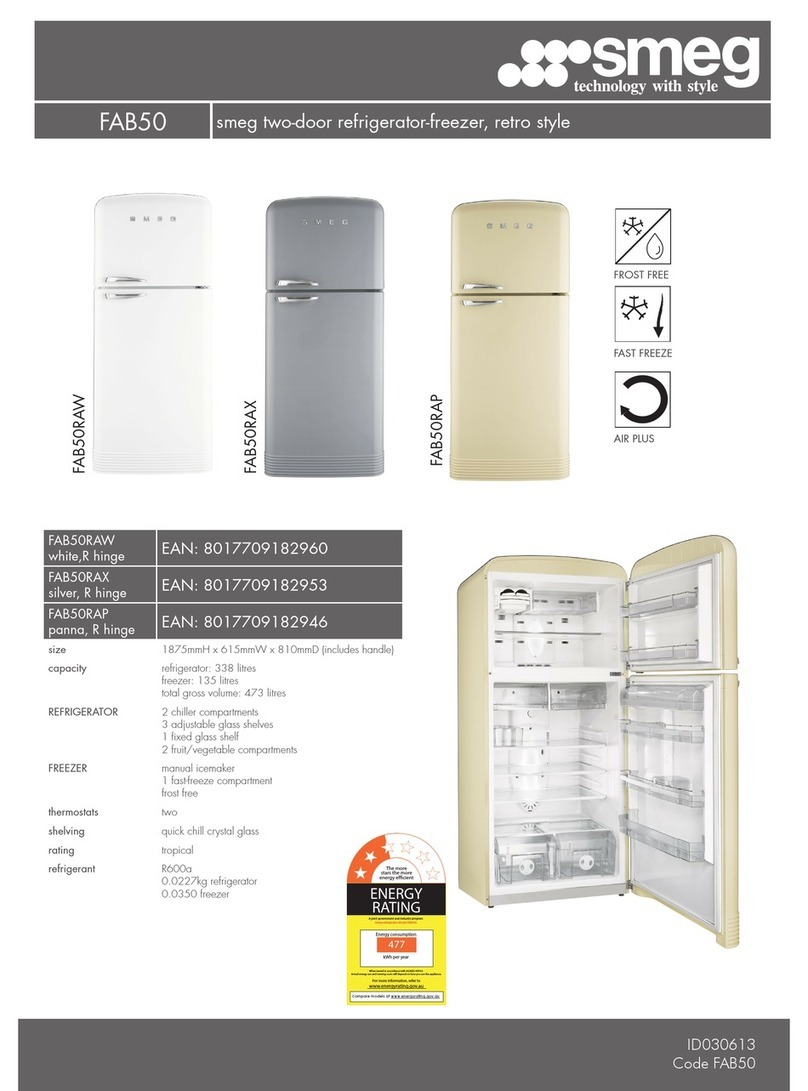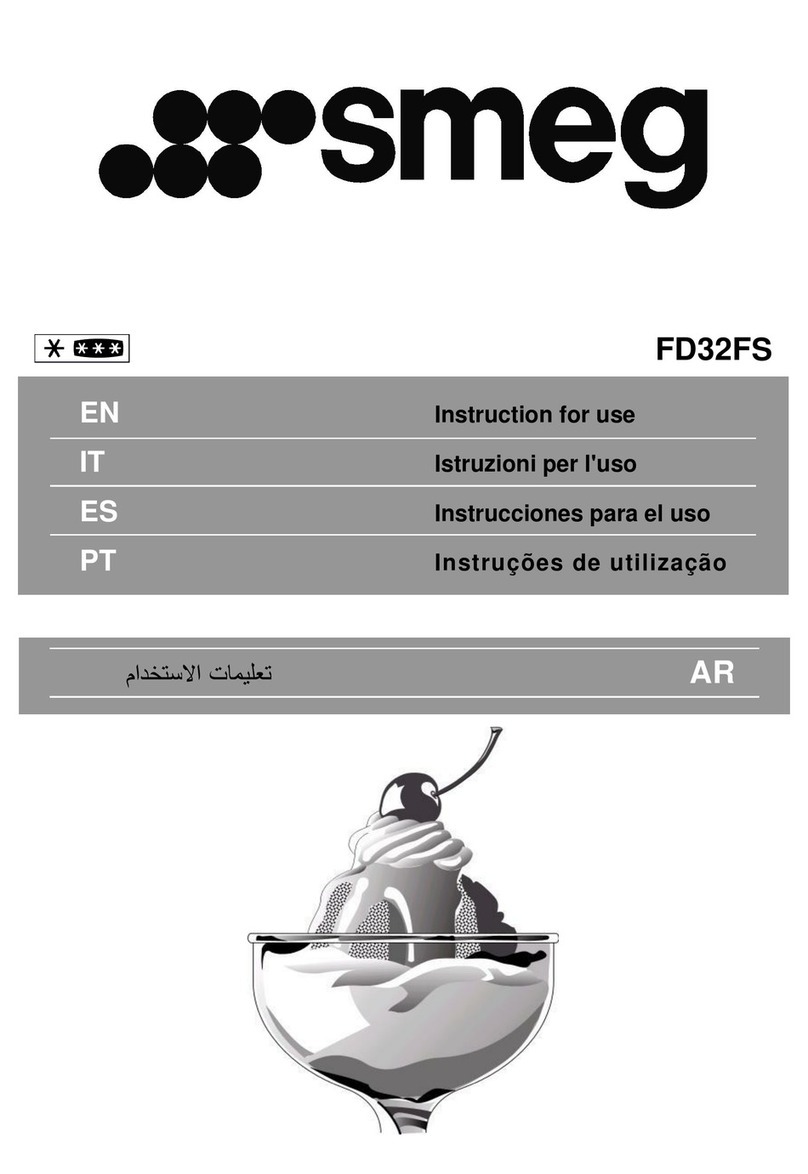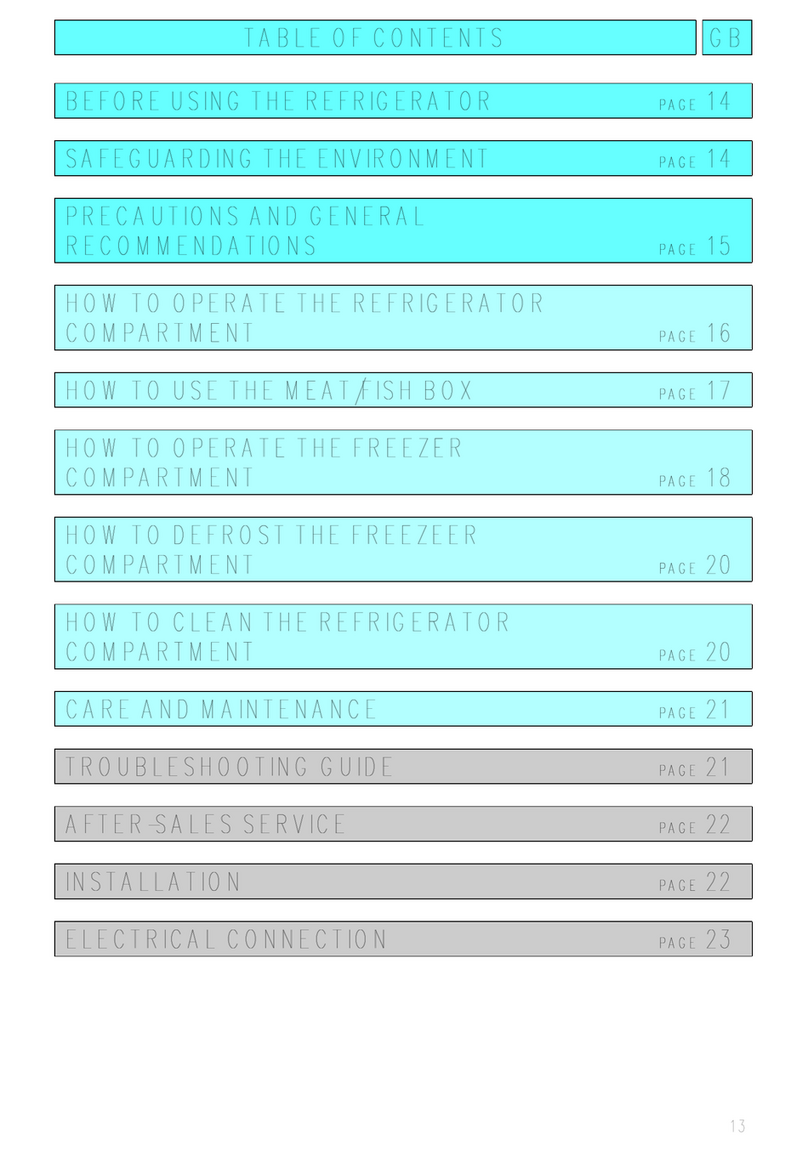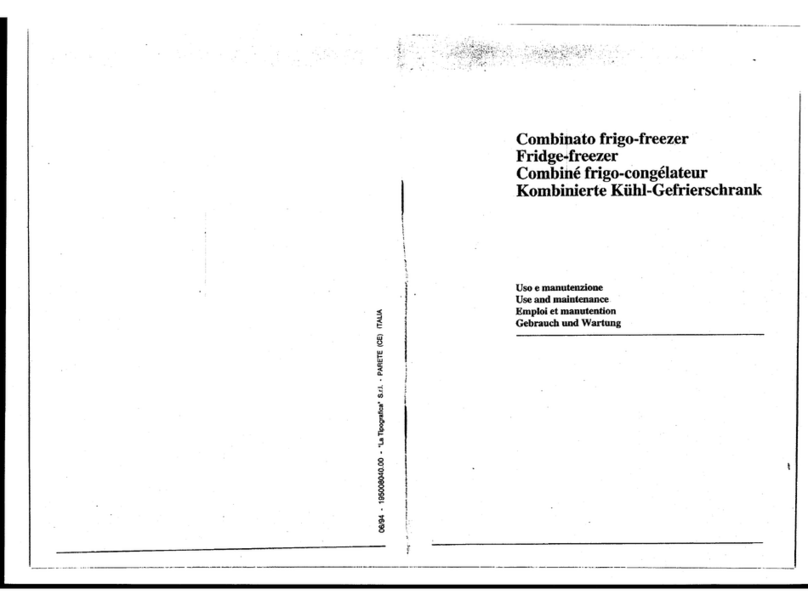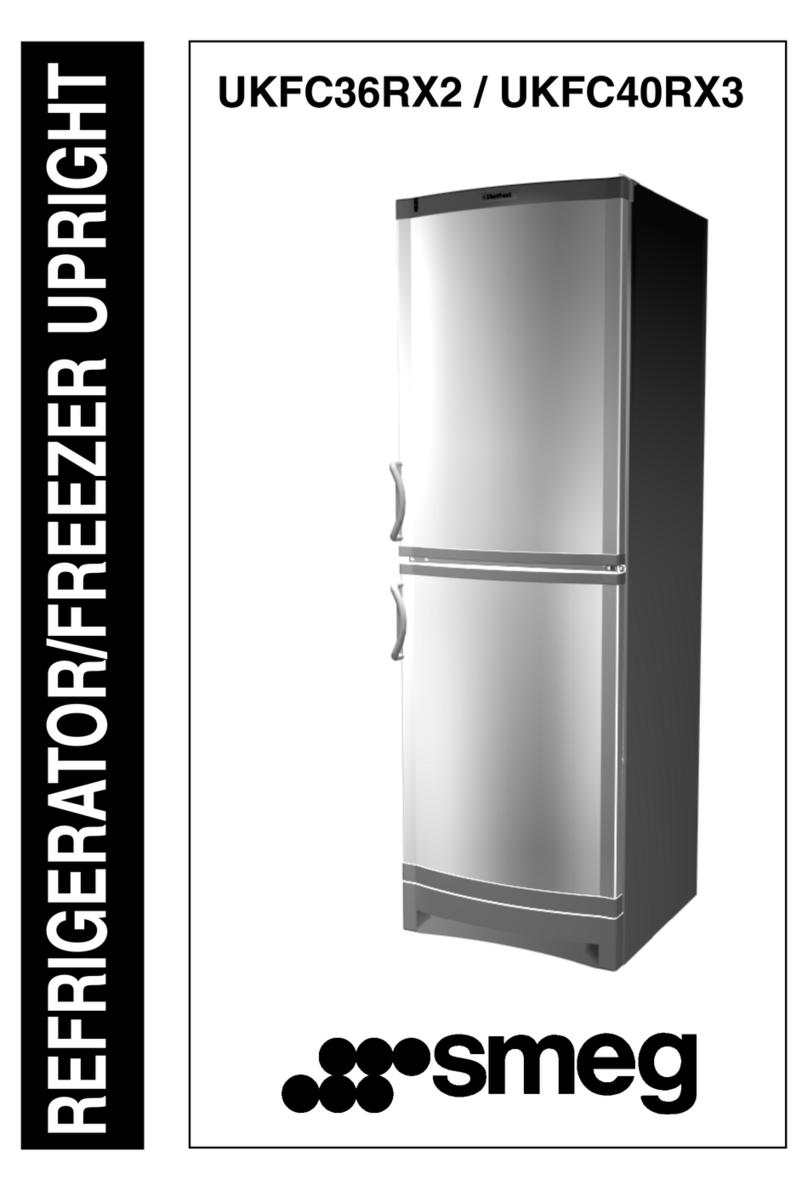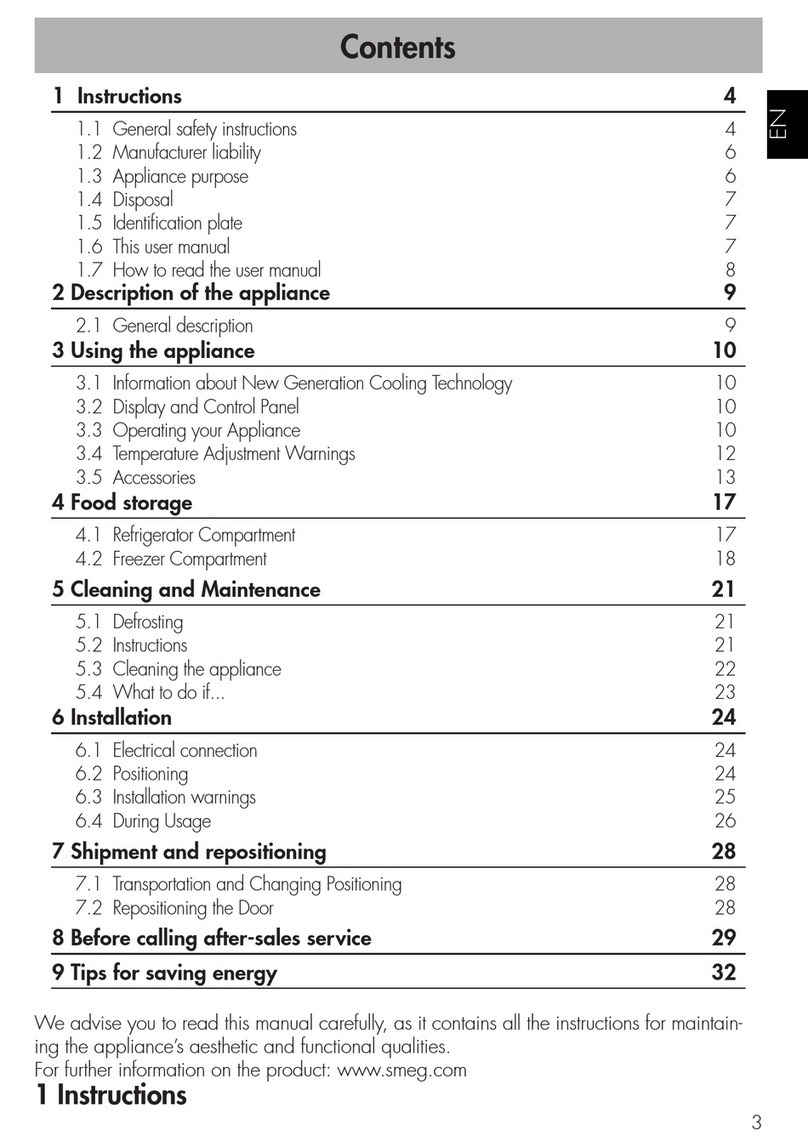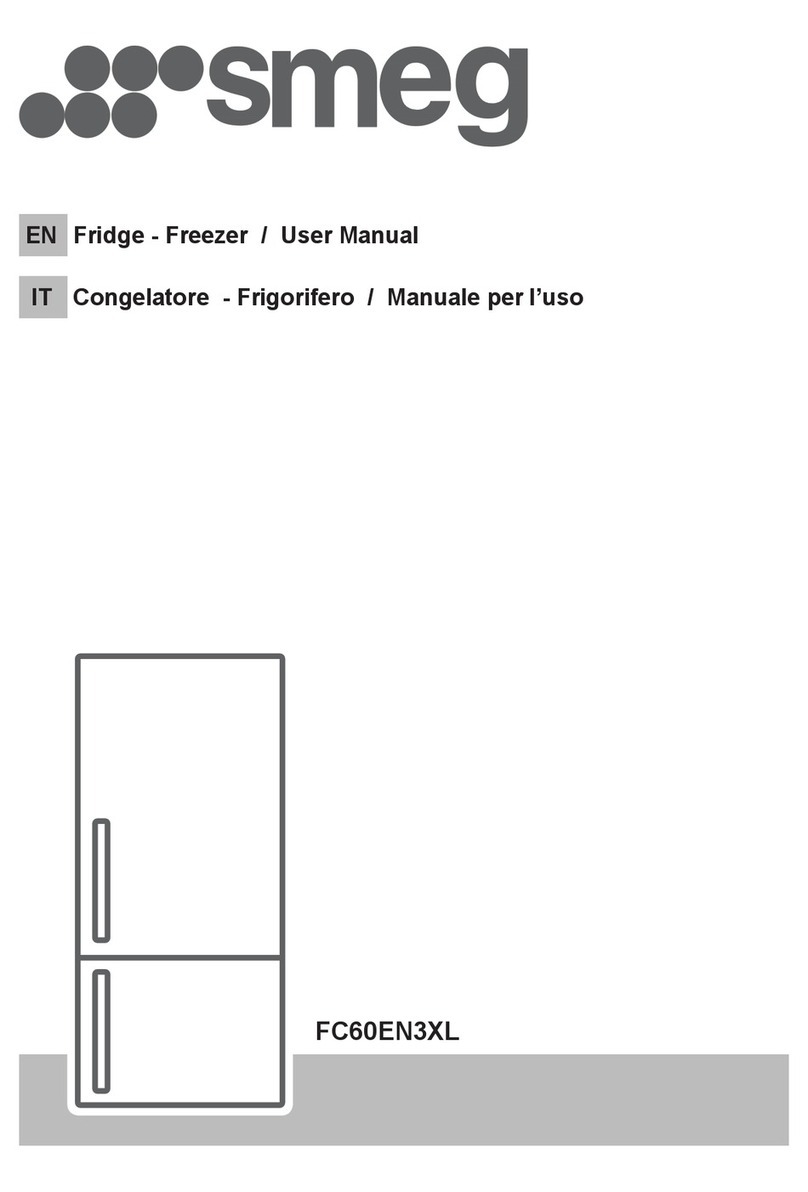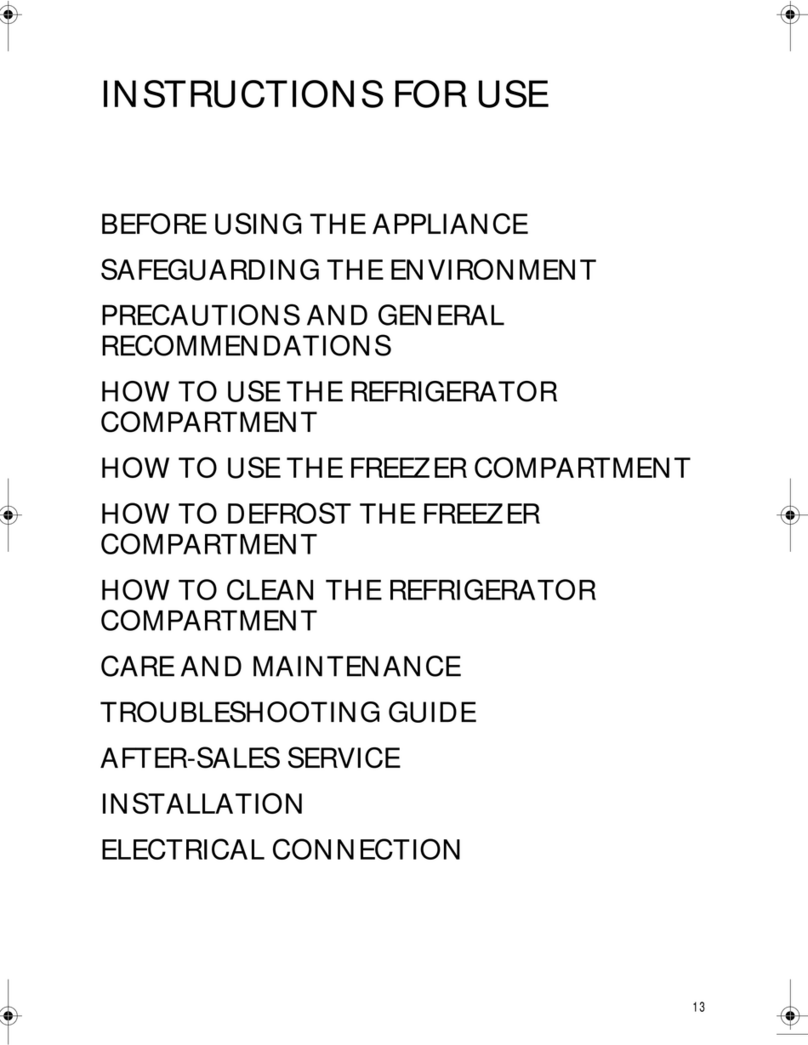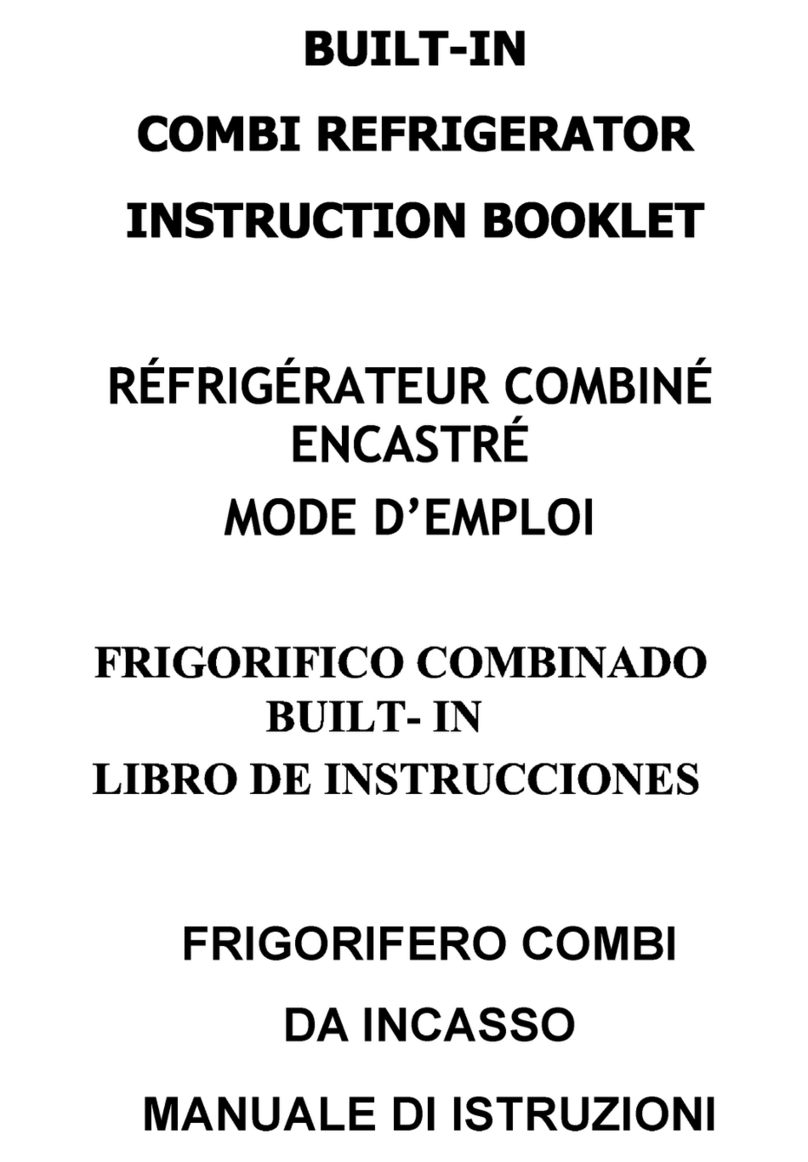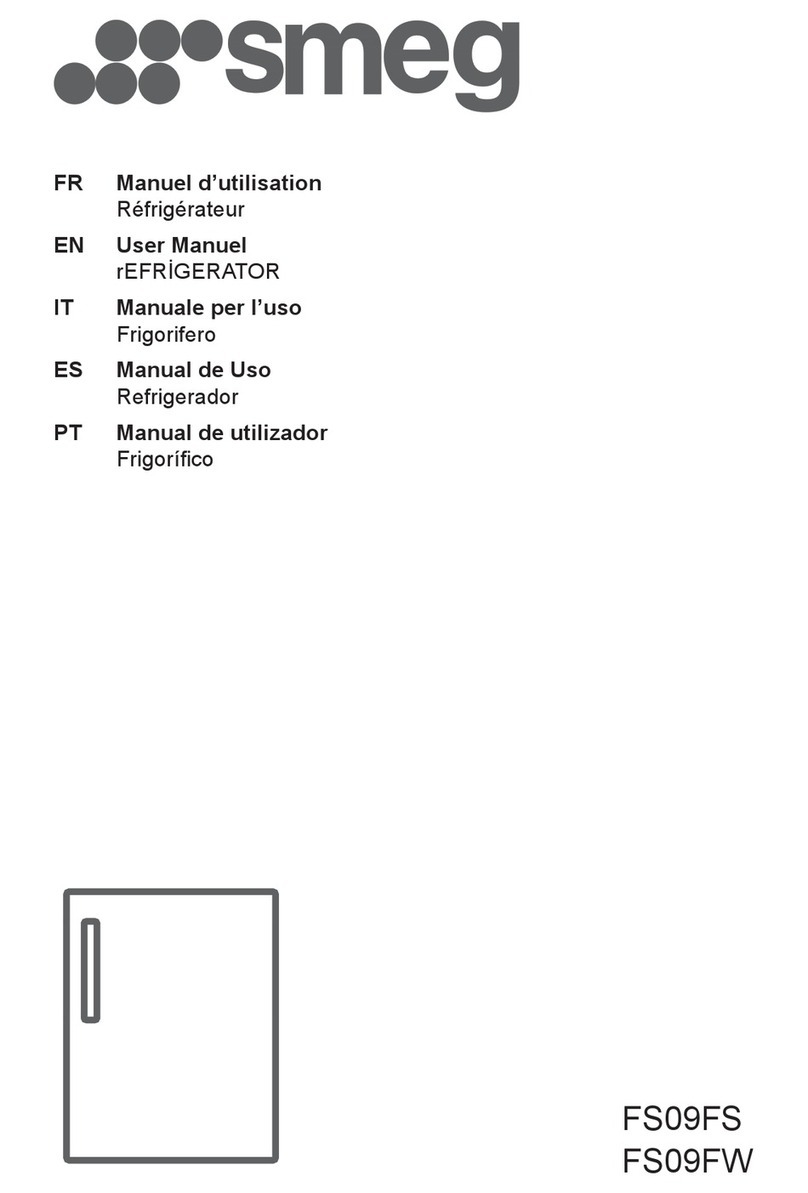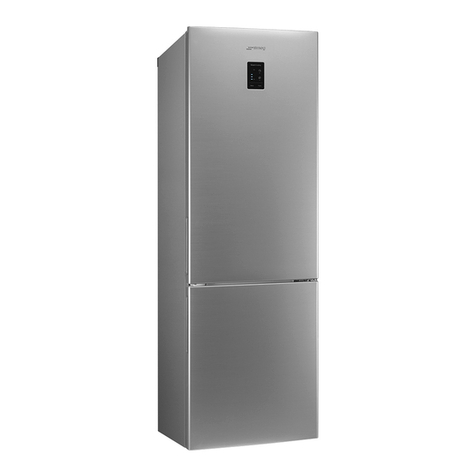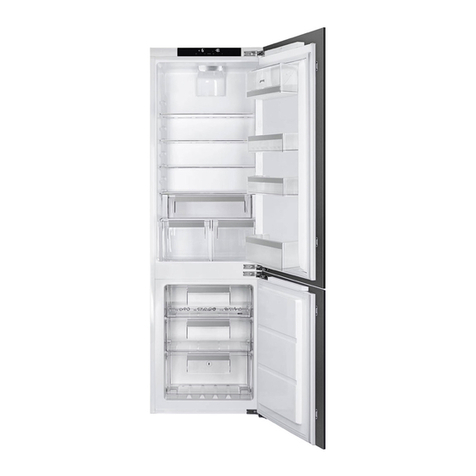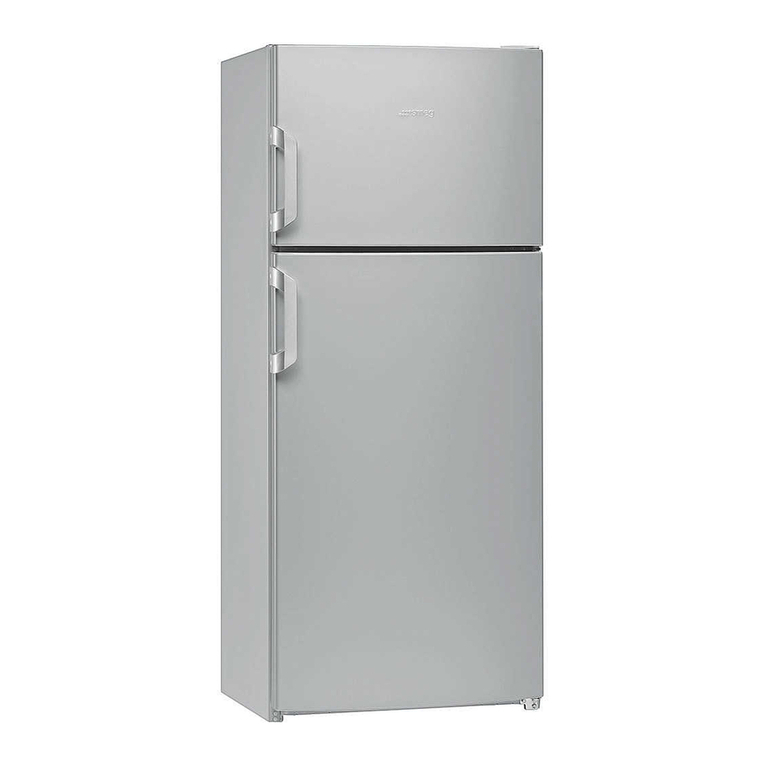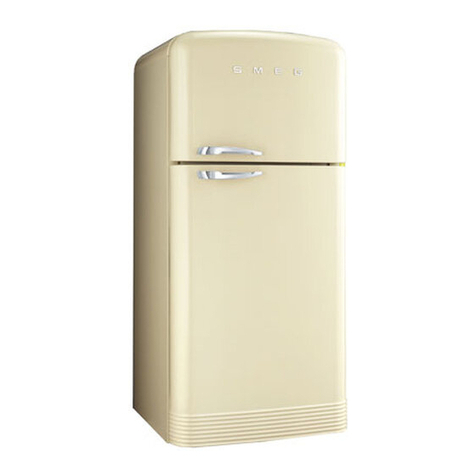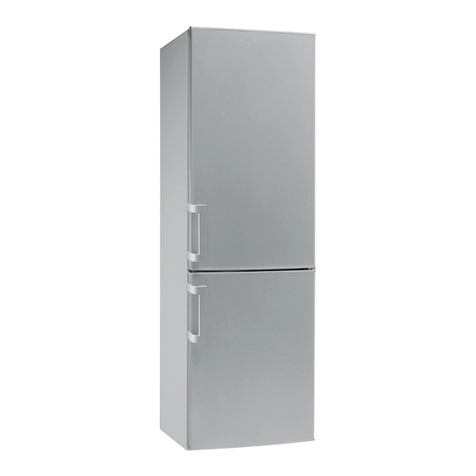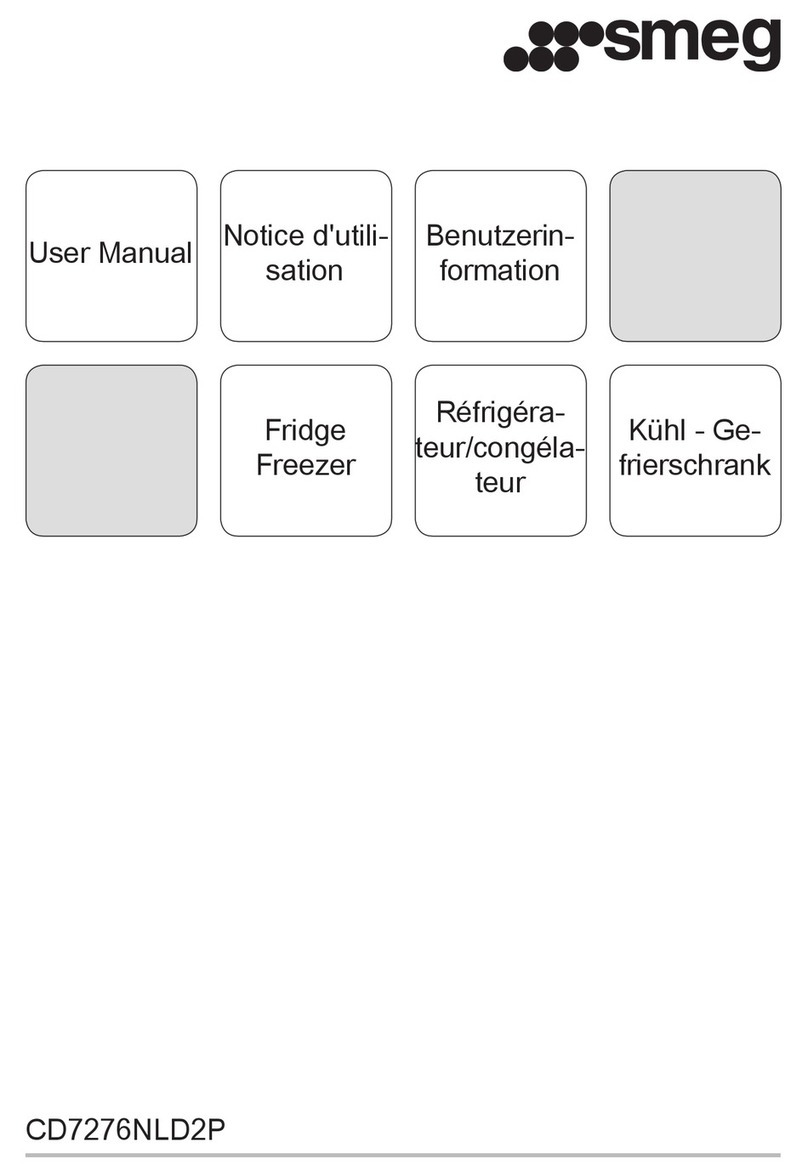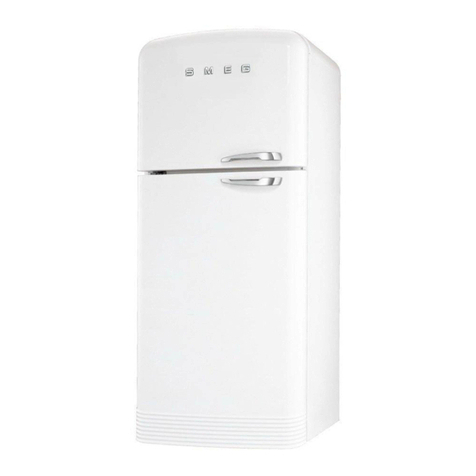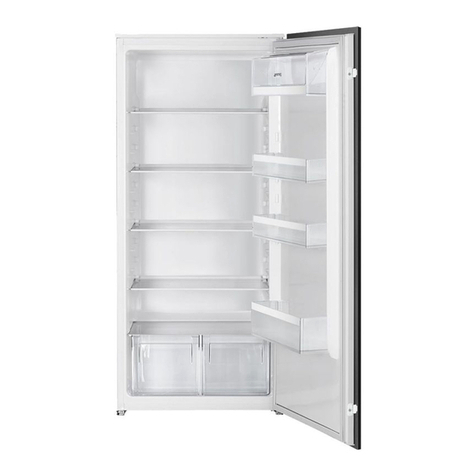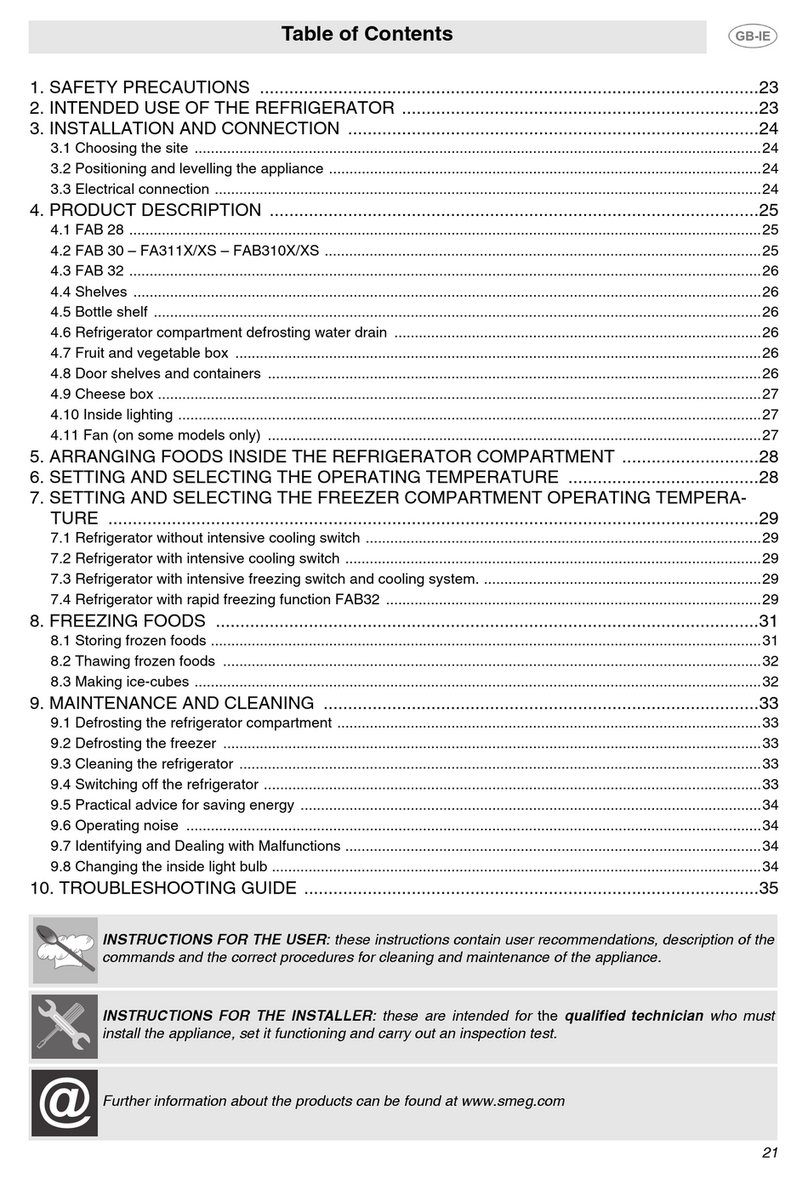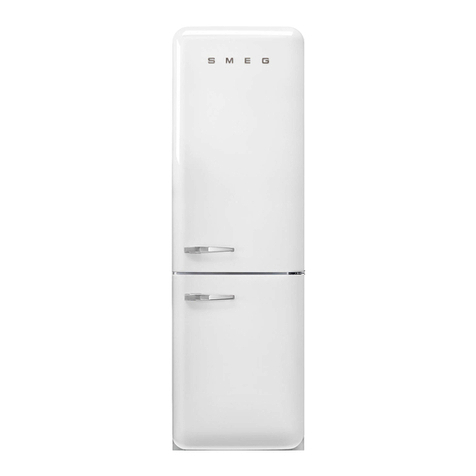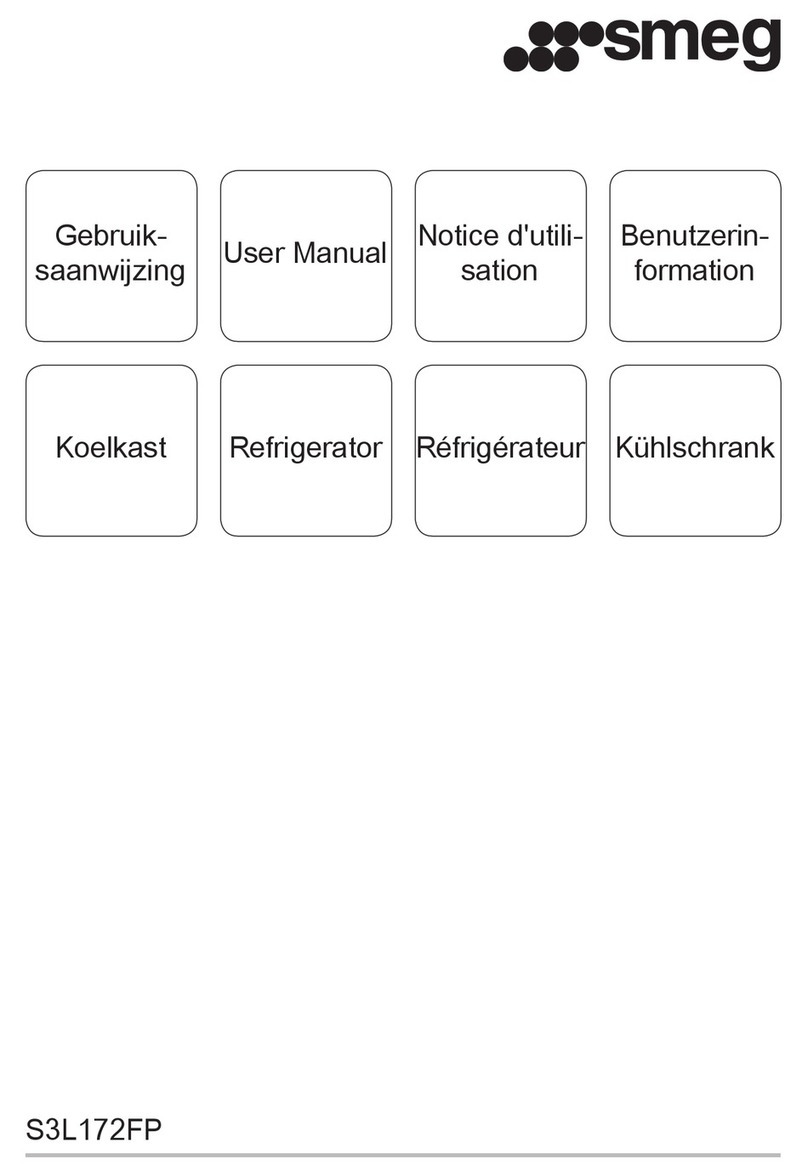
5
EN
• Opening the door for long pe-
riods can cause a signicant in-
crease of the temperature in the
compartments of the appliance.
• Clean regularly surfaces that
can come in contact with food
and accessible drainage sy-
stems.
• Store raw meat and sh in
suitable containers in the refrige-
rator, so that it is not in contact
with or drip onto other food.
• If the refrigerating appliance is
left empty for long periods, swi-
tch off, defrost, clean, dry, and
leave the door open to prevent
mould developing within the
appliance.
Risk of damaging the appliance
• WARNING: When positio-
ning the appliance, ensure the
supply cord is not trapped or
damaged.
• WARNING: Do not locate
multiple portable socket-outlets
or portable power supplies at
the rear of the appliance.
• Do not use plug adapter.
• Never rest sharp metal objects
such as knives, forks, spoons
and lids on the appliance
during use.
• Do not use abrasive or corro-
sive detergents (e.g. scouring
products, stain removers and
metallic sponges) on glass
parts.
• Do not sit on the appliance.
• Do not prize on the door or
handle to move the appliance.
• Do not use steam jets to clean
the appliance.
• Do not use the appliance to
cool rooms for any reason.
• Always unplug the appliance
in the event of a fault or when
performing cleaning or mainte-
nance.
• Do not keep liquids in tins or
glass containers in the freezer.
• Do not use sharp metal objects
to remove excess ice build-up
in the freezer compartment.
• To prevent instability of the
appliance, install and secure
it correctly as indicated in the
instructions provided in this
manual.
• Do not place heavy objects on
the top of the appliance.
Instructions
